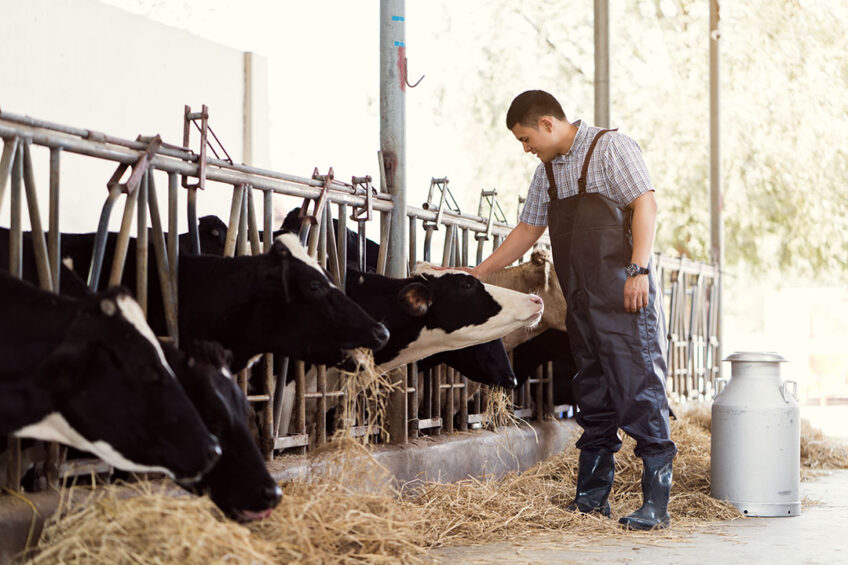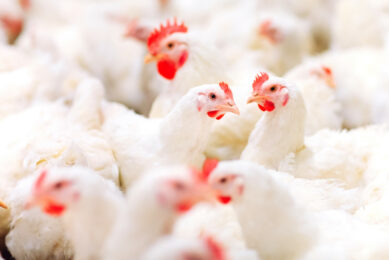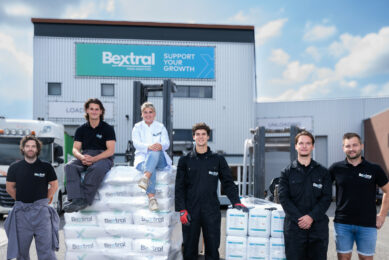Formulating ruminant health for farm excellence

Calving is the most difficult and challenging phase in the life of a dairy cow. Her body will prepare to start the next lactation and without adequate nutrition and management, her health will deteriorate and profit will decrease.
In formulating a ruminant health programme, Kemin focuses on both the pre- and post-calving phase in dairy cows. In this article, we give you a clearer overview of the importance and pitfalls about the pre-calving phase in the cow’s life.
The pre-calving phase
A critical time in the dry period is the last 3 weeks before calving, also known as the “close-up” period. During this time, the cow is preparing to start her next lactation. Without adequate nutrition and management, cows can calve in and fade quickly and lose potential income for you.
The close-up dry phase needs to be considered a high attention area that sets the stage for how well the cow will perform after calving.
We all know that dry cows should be moved to the close-up pen before their due date, but where does this recommendation come from? For a lactating cow to be successful, she needs to be able to mobilise calcium from her bones. This process can take 10 to 15 days. Without adequate time to prepare for lactation, milk fever can be a major issue. By changing the diets provided during the close-up period, not only are we allowing time for the cow to begin to mobilise calcium, she also needs time for her rumen to adapt to the forages and higher energy diets which are essential to absorb nutrients and prevent problems after calving.
Today’s biggest concern with pre-calving phase
Today’s concern is not actually clinical disease and its treatment cost, but instead focuses on “subclinical metabolic disorders” which affect you very badly. Metabolic disorder i.e. subclinical hypocalcaemia (SCH) is considered as “a gateway disease” because it is associated with increased risk of periparturient problems that have long-term consequences to production, reproduction, and survival. Research findings clearly indicate that cows are more susceptible to hypocalcaemia as the lactation number increases (Figure 1).
Figure 1 – Association of hypocalcaemia with the lactation number.

Subclinical hypocalcaemia effects beyond milk fever
In 2014, Martinez and coworkers studied the impact of subclinical hypocalcaemia beyond milk fever. They induced SCH through 5% ethylene glycol tetra acetic acid (intravenous infusion) treatment for 24 hours. They reported that SCH significantly (* P<0.01) reduced dry matter intake, increased non esterified fatty acids (nefa) concentration, reduced rumen contractions and decreases neutrophil functions as compared to normocalcemic cows. they also studied the effect of normocalcemia sch and its effects on metritis incidences when a cow is in a high-risk situation. a high risk situation was described as a cow being diagnosed with dystocia, twins, still born or retained foetal membranes. normocalcemic cows in a high-risk situation showed 20% incidences of metritis, whereas subclinical hypocalcemic cows showed 77.8% incidences of metritis in the similar high-risk situation (>Figure 2).
Formulating pre-calving cow’s health
A meta-analysis consisting of 42 randomised trials suggested that cows with cationic diets (diets having a positive charge due to higher concentration of sodium, potassium, calcium and magnesium) are more likely to suffer increased incidences of milk fever or hypocalcaemia. Cationic diets are one of the strong triggers of subclinical hypocalcaemia during close-up dry cow phase. Anionic diets (diets having a negative charge due to higher concentration of chloride, sulphur and phosphorus) promote a more acidic metabolic state (lower blood pH) that is associated with a reduced incidence of milk fever.
Is your cow’s diet cationic or anionic?
It is likely that most diets are cationic in nature, based on the dietary ingredients used in the diet of close-up cows. One of the main reasons for this is that these ingredients are fundamentally cationic.
Turning your cows’ diets from cationic to anionic can create optimal acidification in the cow’s blood. These acidogenic diets work to minimise hypocalcaemia by:
1. Changing the cow’s blood pH towards slightly acidic condition due to increasing the concentration of chloride ions
2. Mobilising more calcium from the bones to buffer the acid in her bloodstream
3. Achieving maximum calcium supply at the time of calving
4. Reducing incidences of hypocalcaemia which occur due to calcium deficiency
Kemin offers on-site pH measurement kit for monitoring urinary pH in cows, which is critical for analysing pitfalls after calving, as well as diet testing facilities in our laboratory to check cation status. This way we propose the most refined application of hypocalcaemia control solutions/technologies.
Solution in formulating pre-calving cow’s health
NutriCAB encapsulated calcium chloride, comes with highest concentration (>80%) of calcium chloride in encapsulated form to mask the bitterness of anionic salt during intake, controlling hygroscopicity during application & storage, ensuring skin safety while handling and improve metabolic health for improved cow performance. Compromised immunity and decreased muscle tone due to calcium deficiency can be associated with increased incidence of retained foetal membranes in dairy cows. Under formulating ruminant health programme for pre-calving cows (last 21 days before calving) when diets were made acidogenic with NutriCAB, the incidence of retained foetal membranes reduced from 28.7% to 5.4% (average of 4 farms, Figure 3 ).
Figure 3 – Changes in the incidences of retained foetal membranes after the introduction of NutriCAB.

Pre-calving sets the stage
The pre-calving cow phase is an area of great importance that sets the stage for how well the cow manages after calving. Hypocalcaemia is known to be the main problem affecting calving. Research studies indicate that to combat hypocalcaemia, pre-calving cow diets should be acidogenic. Kemin ’s experience and strategies will help you resolve the challenges of the pre-calving process and optimise your dairy farm’s profits.
Reference are available upon request.
Author: Deepak Dubey, PhD, Kemin Europa N.V
Join 13,000+ subscribers
Subscribe to our newsletter to stay updated about all the need-to-know content in the dairy sector, two times a week.







